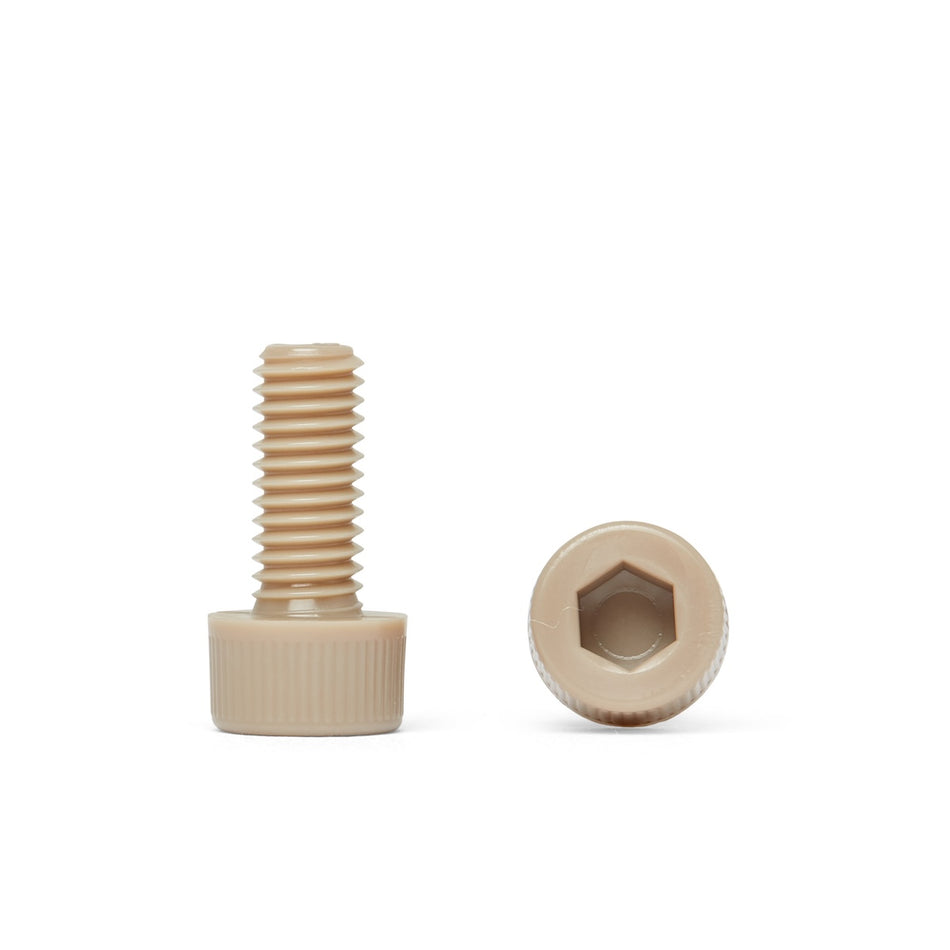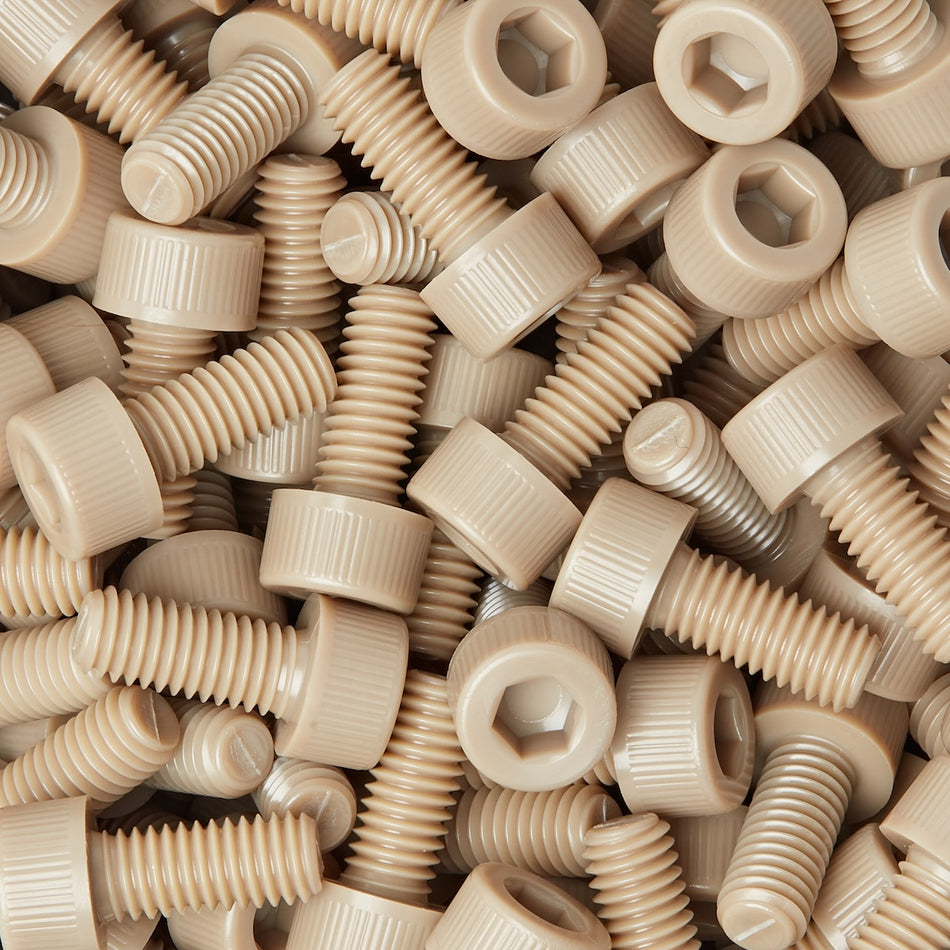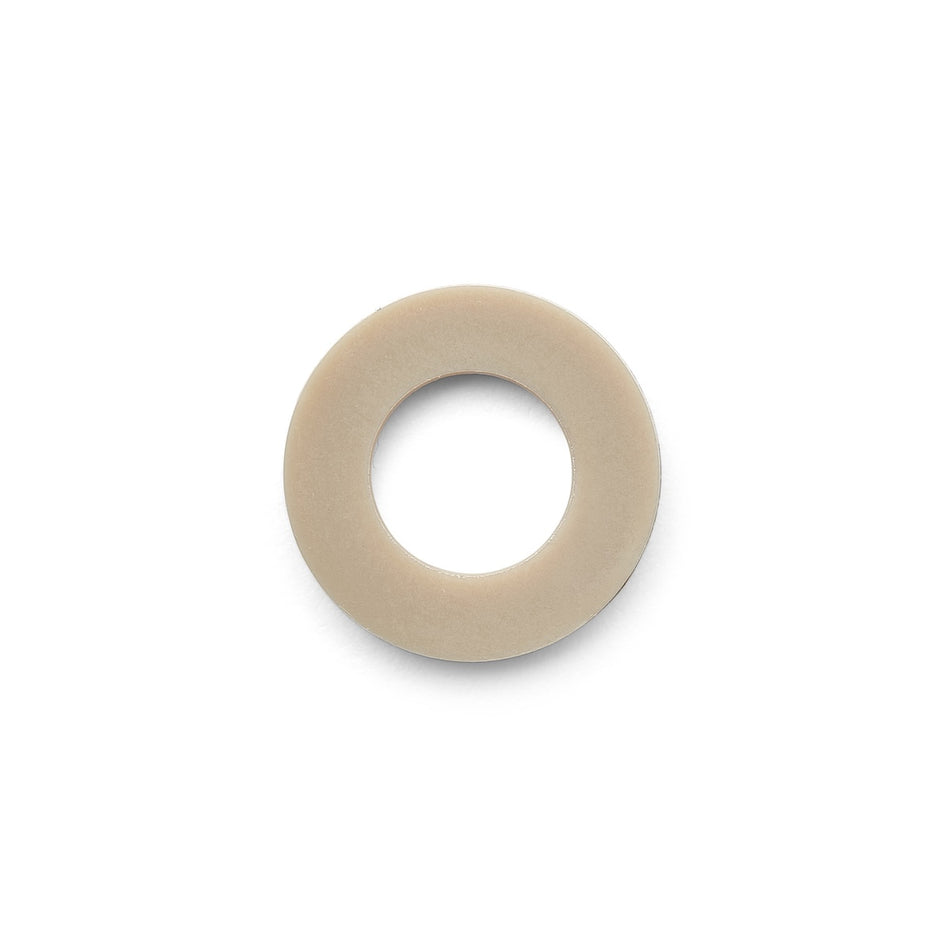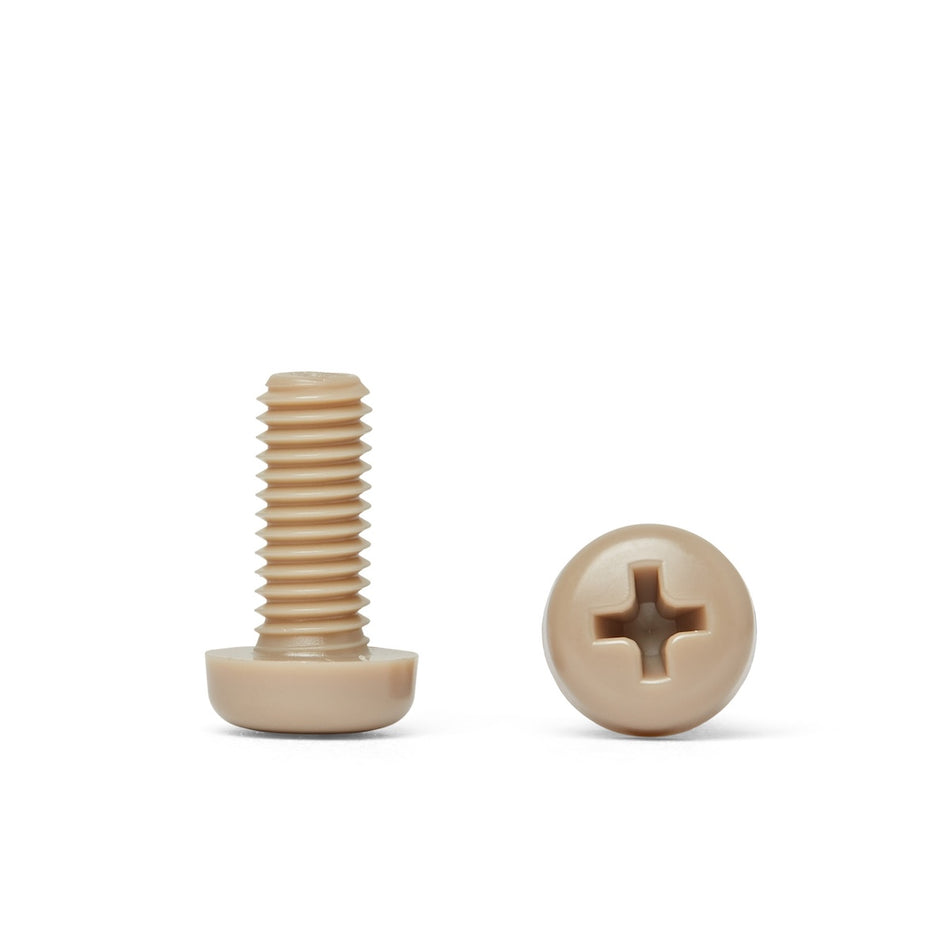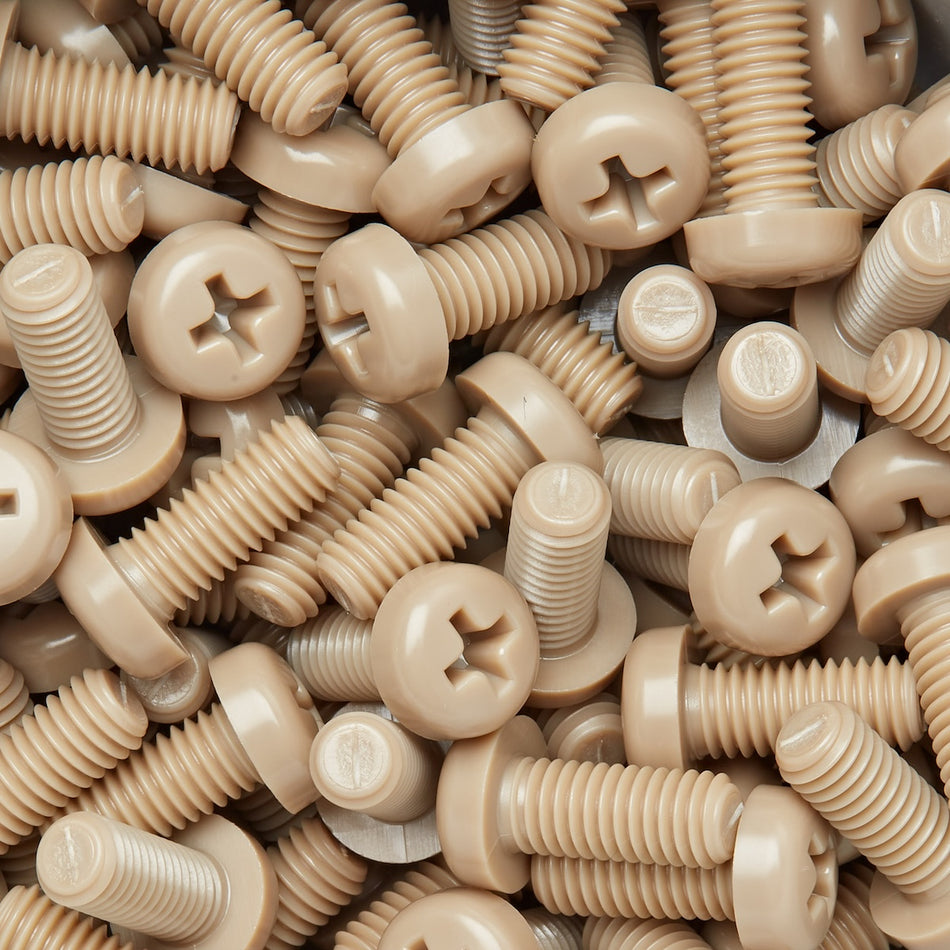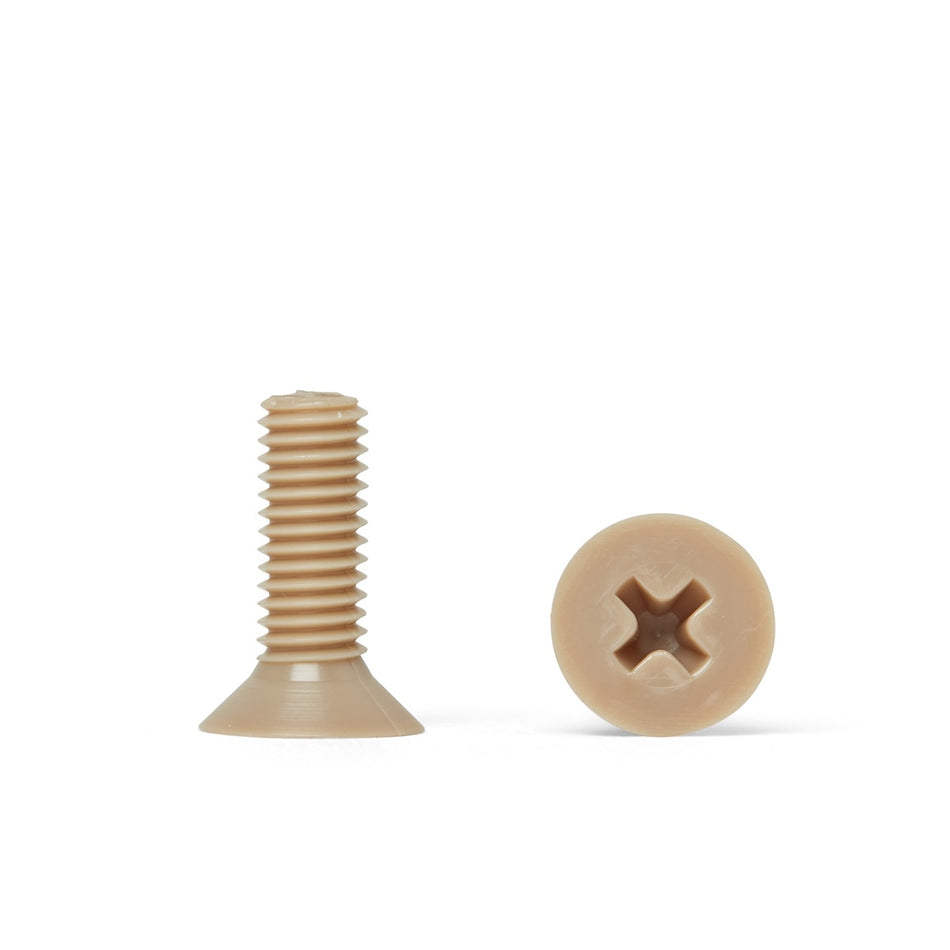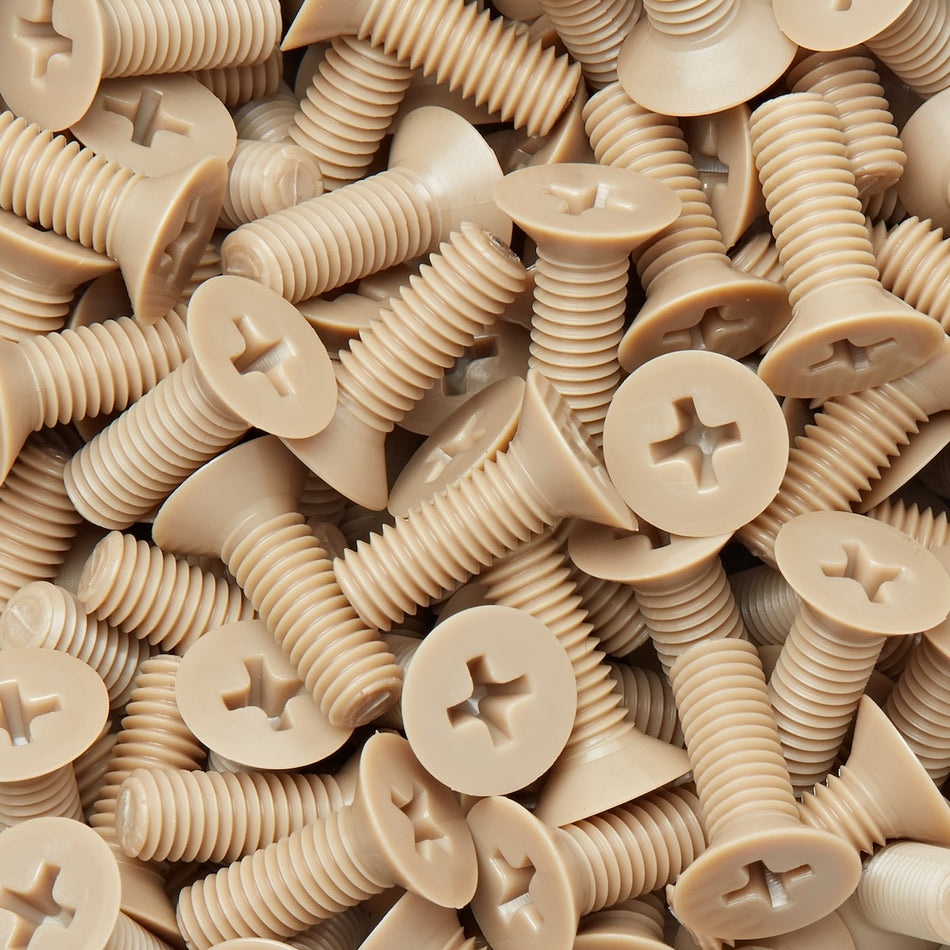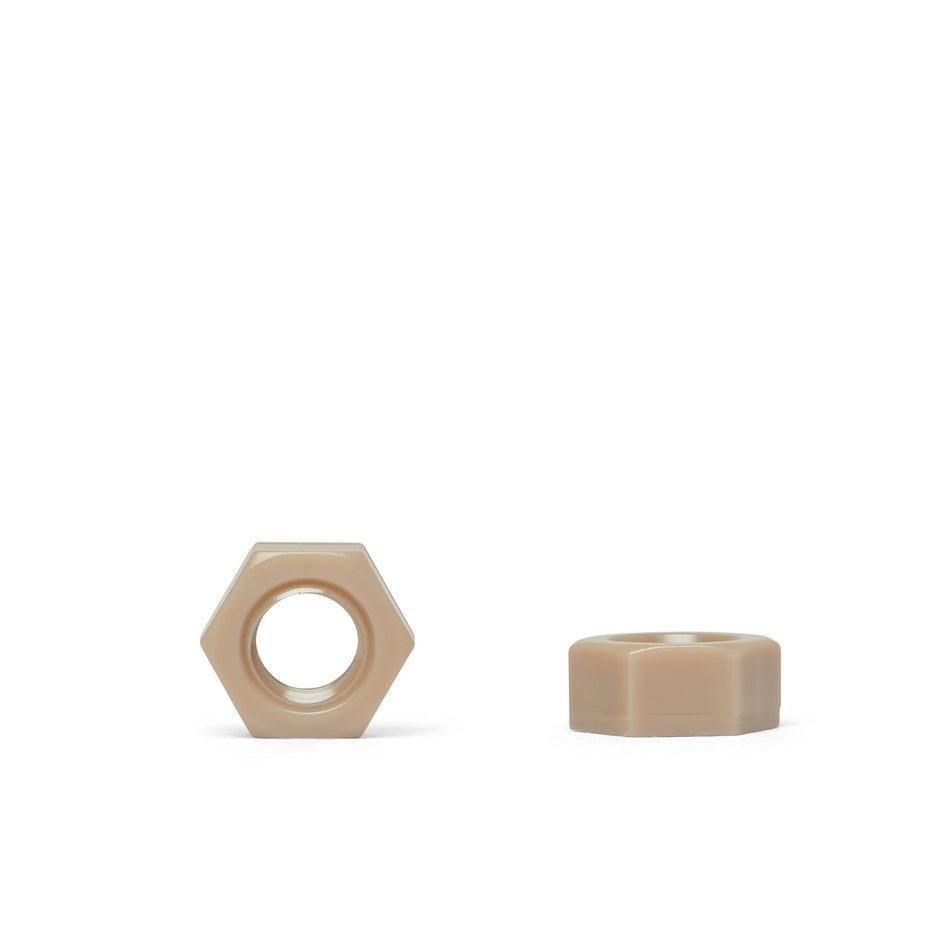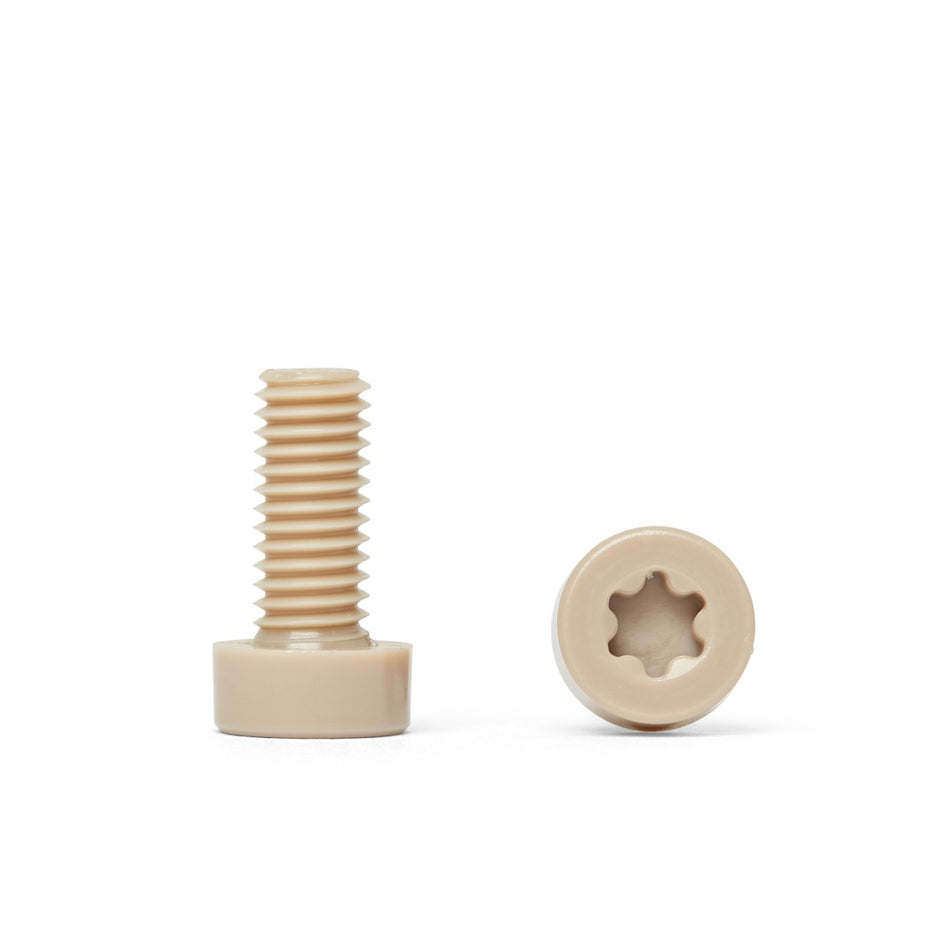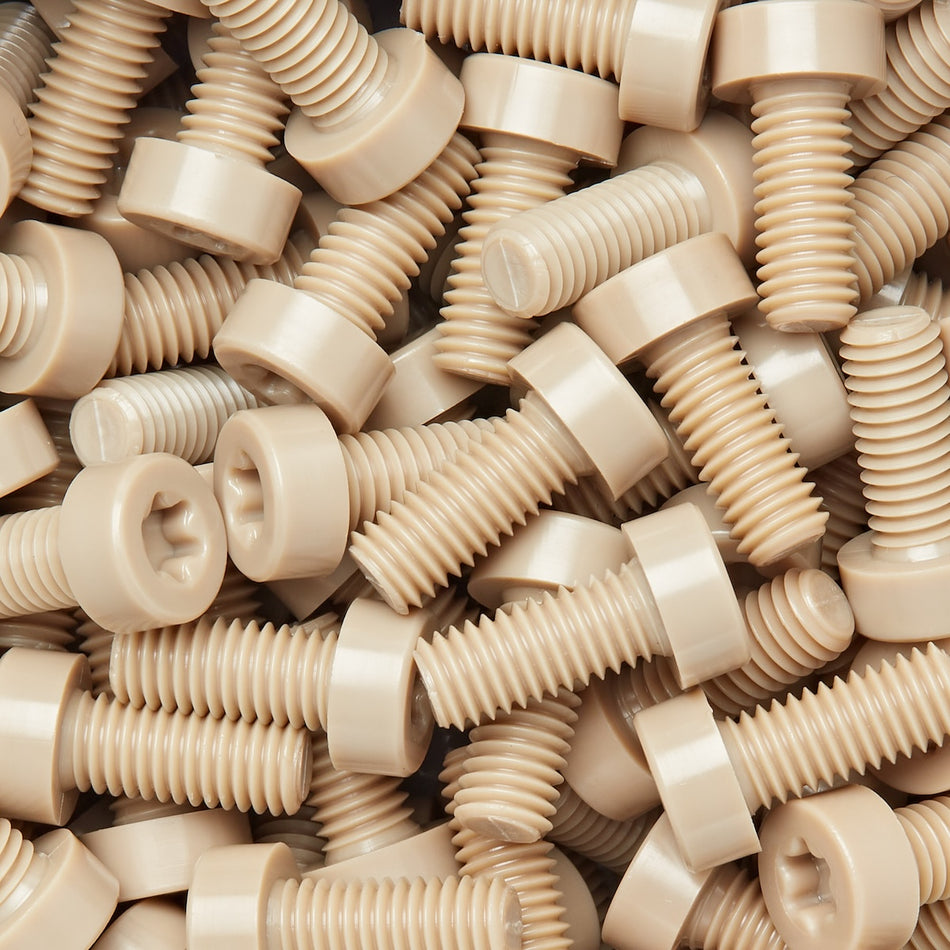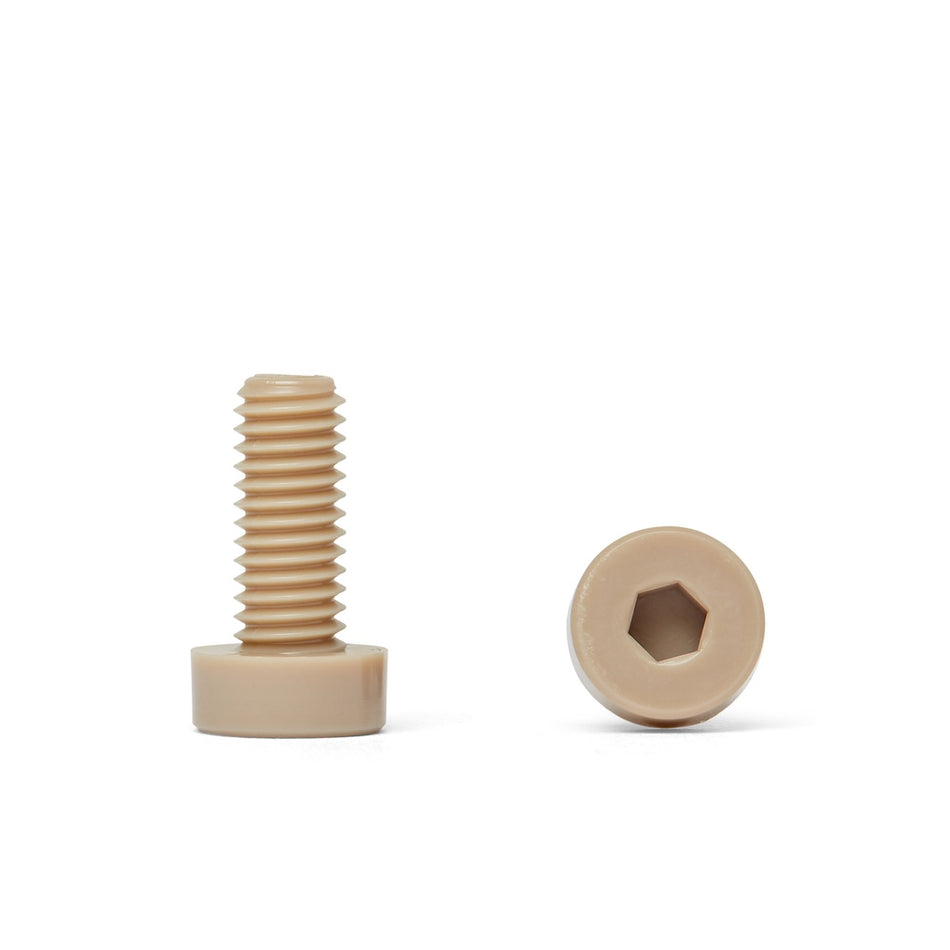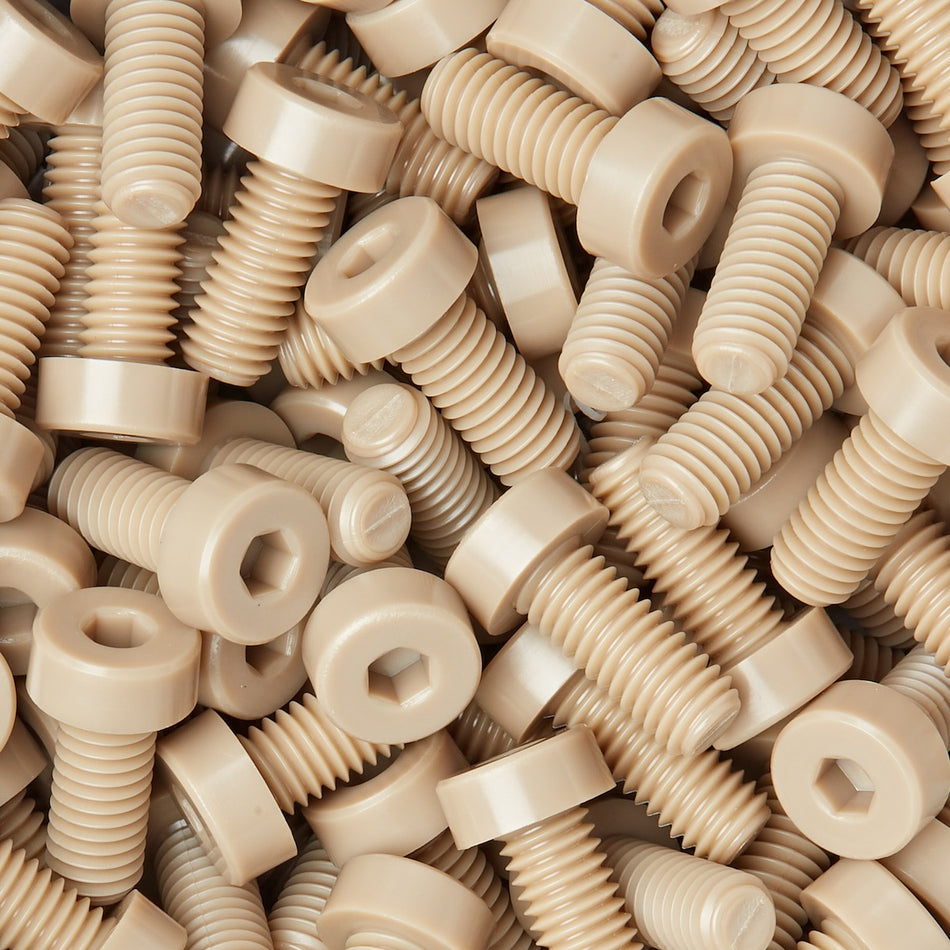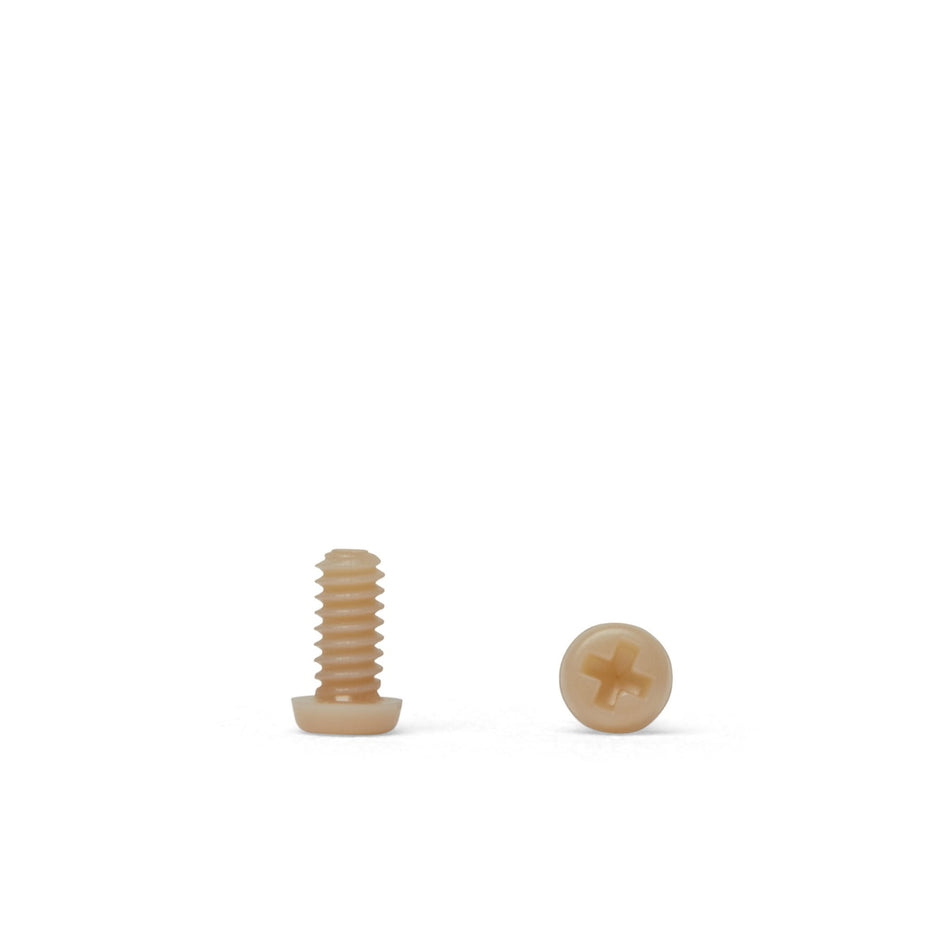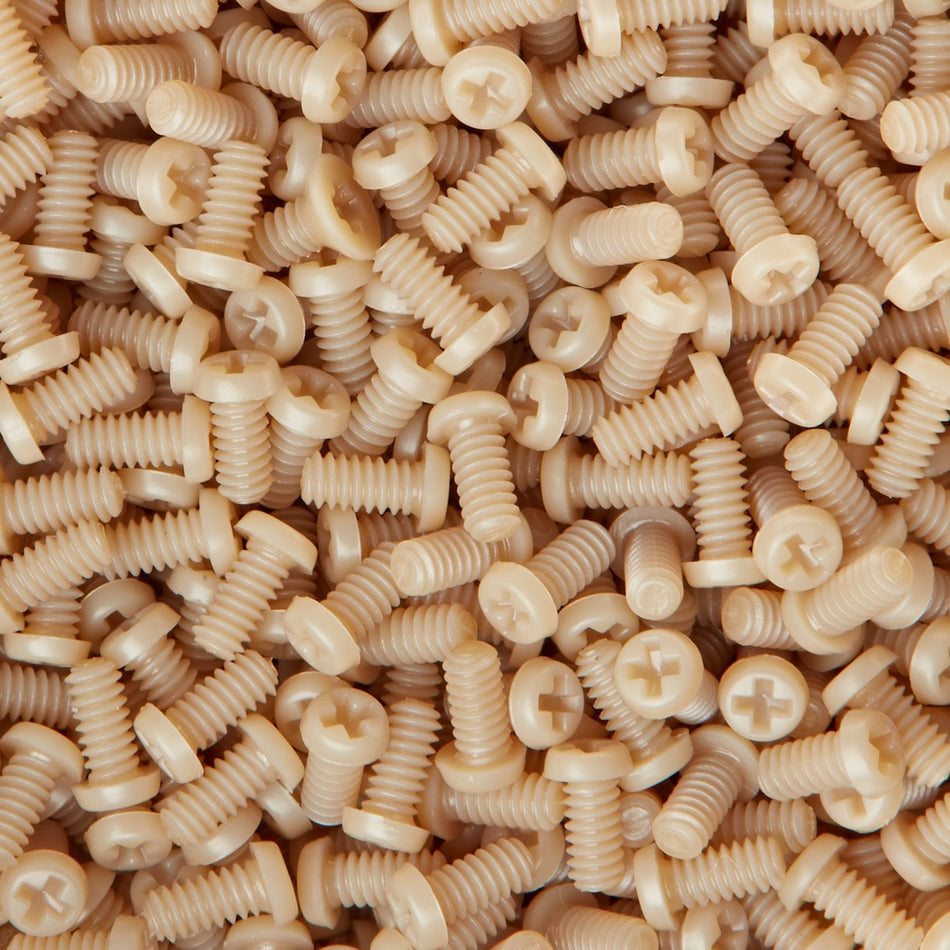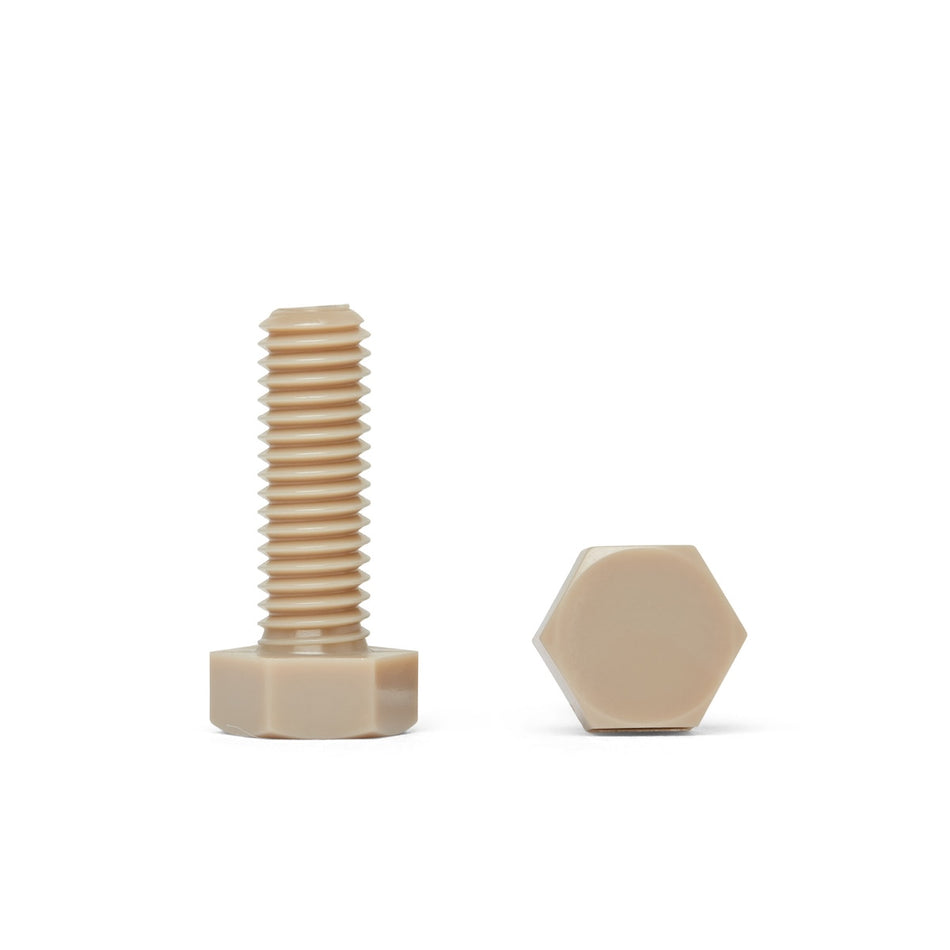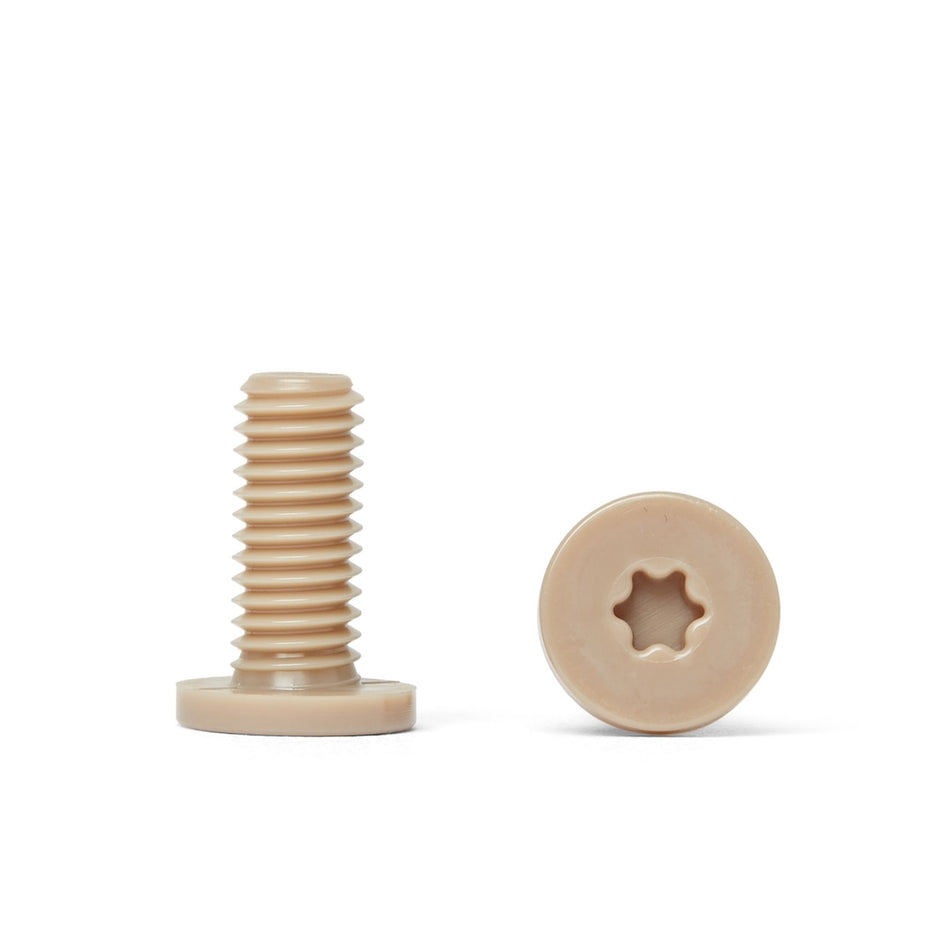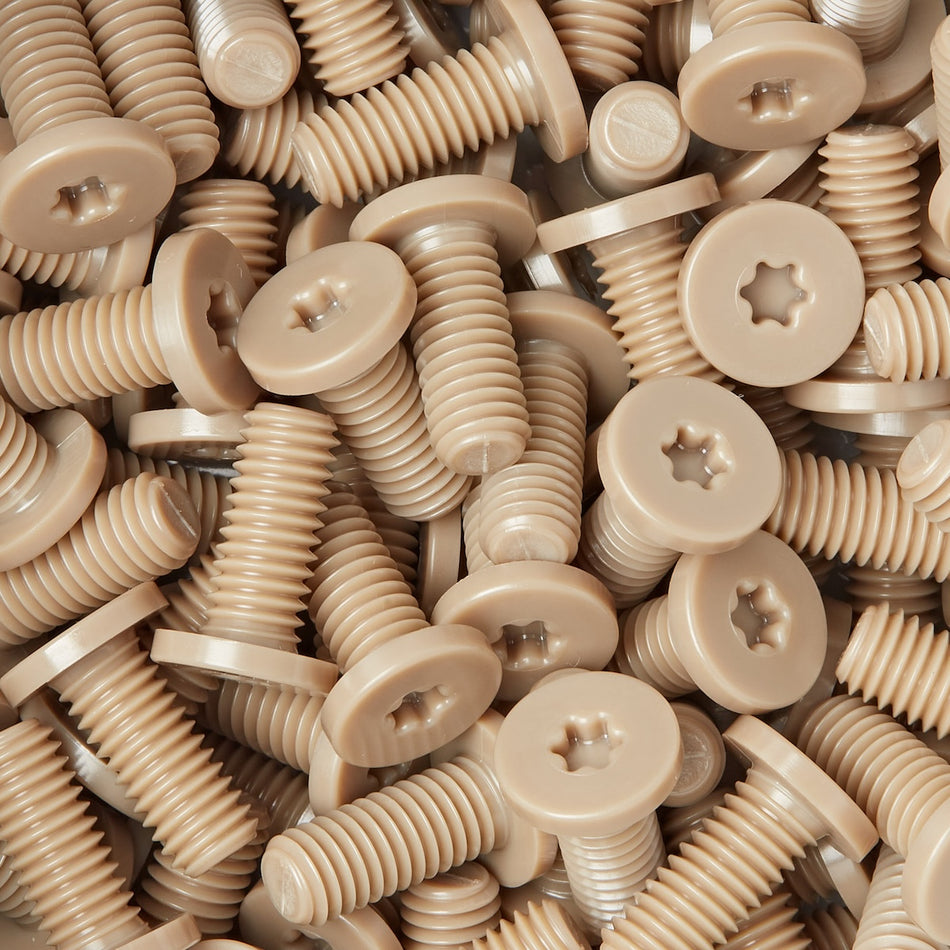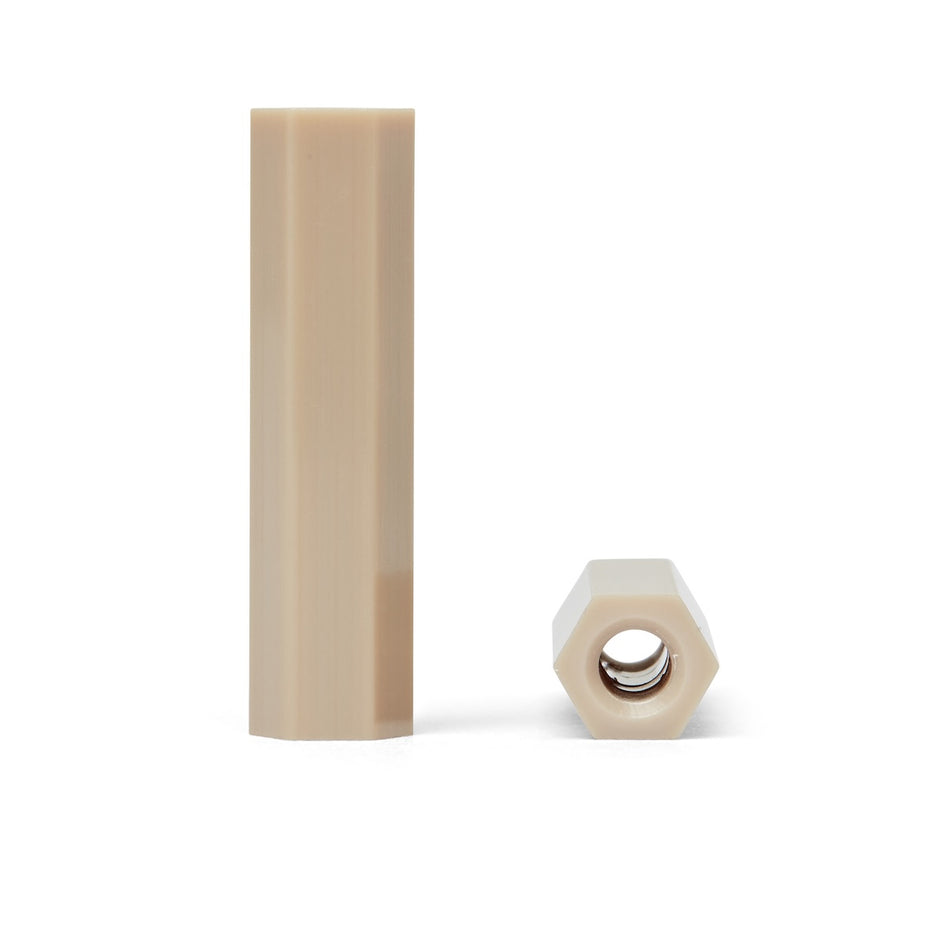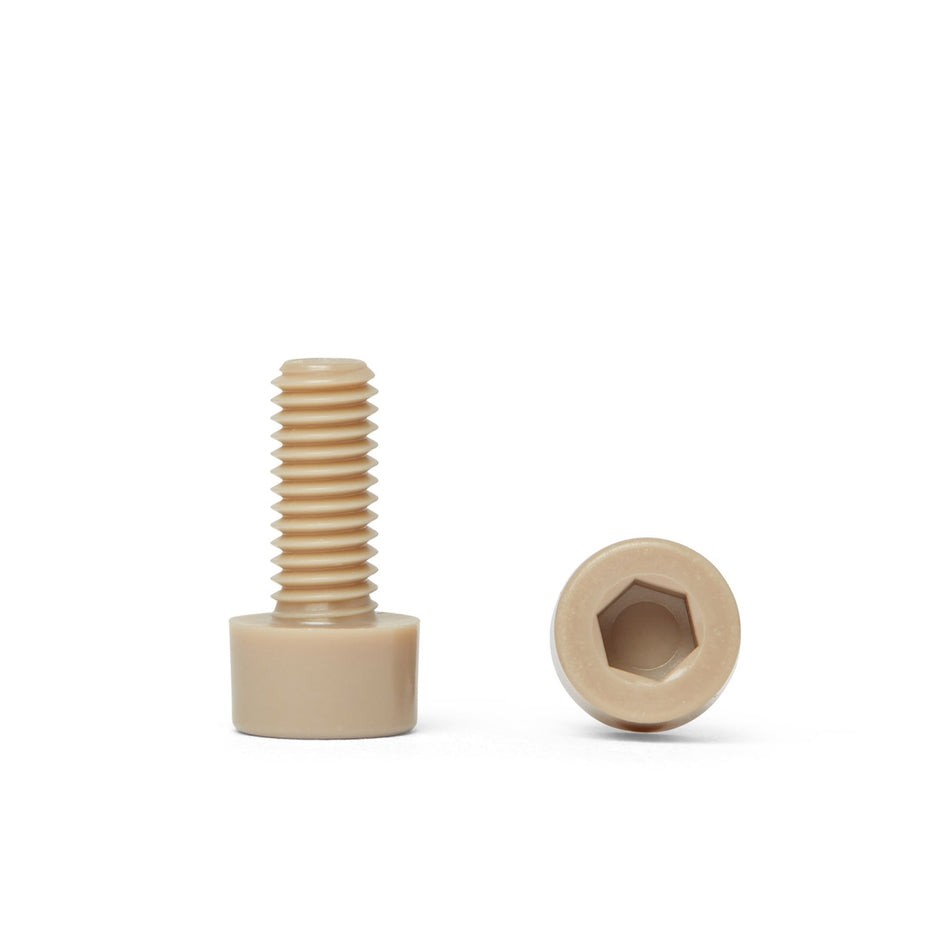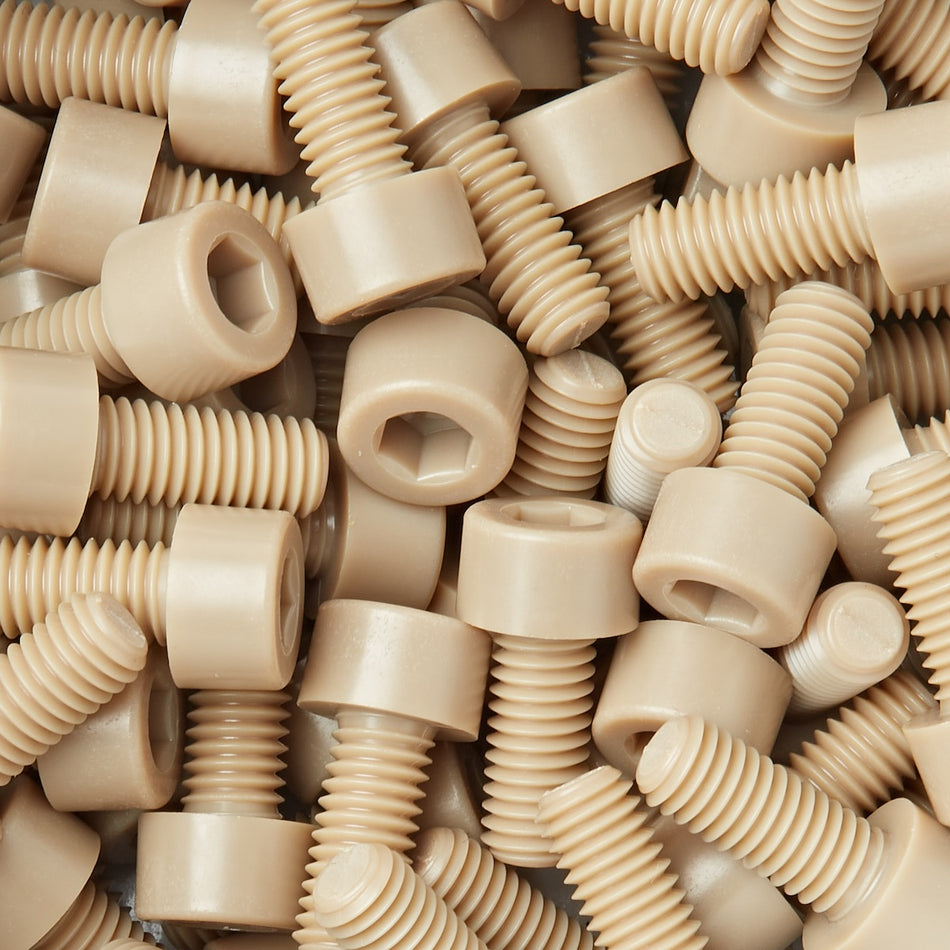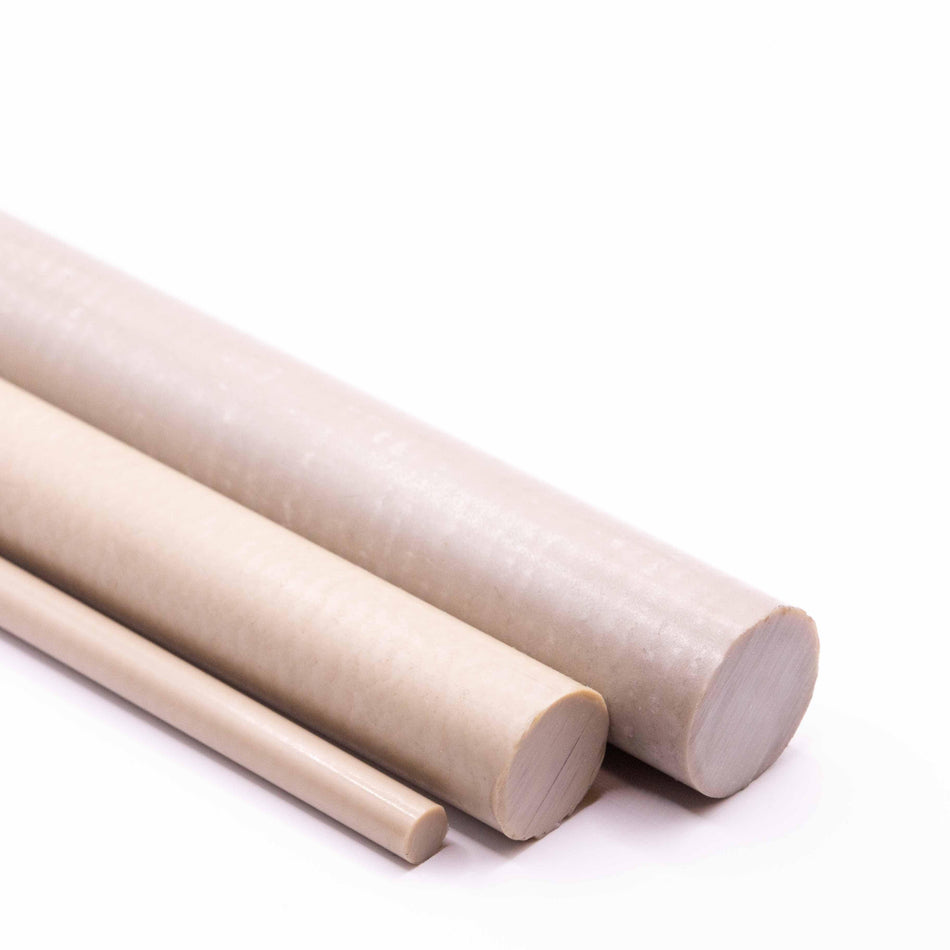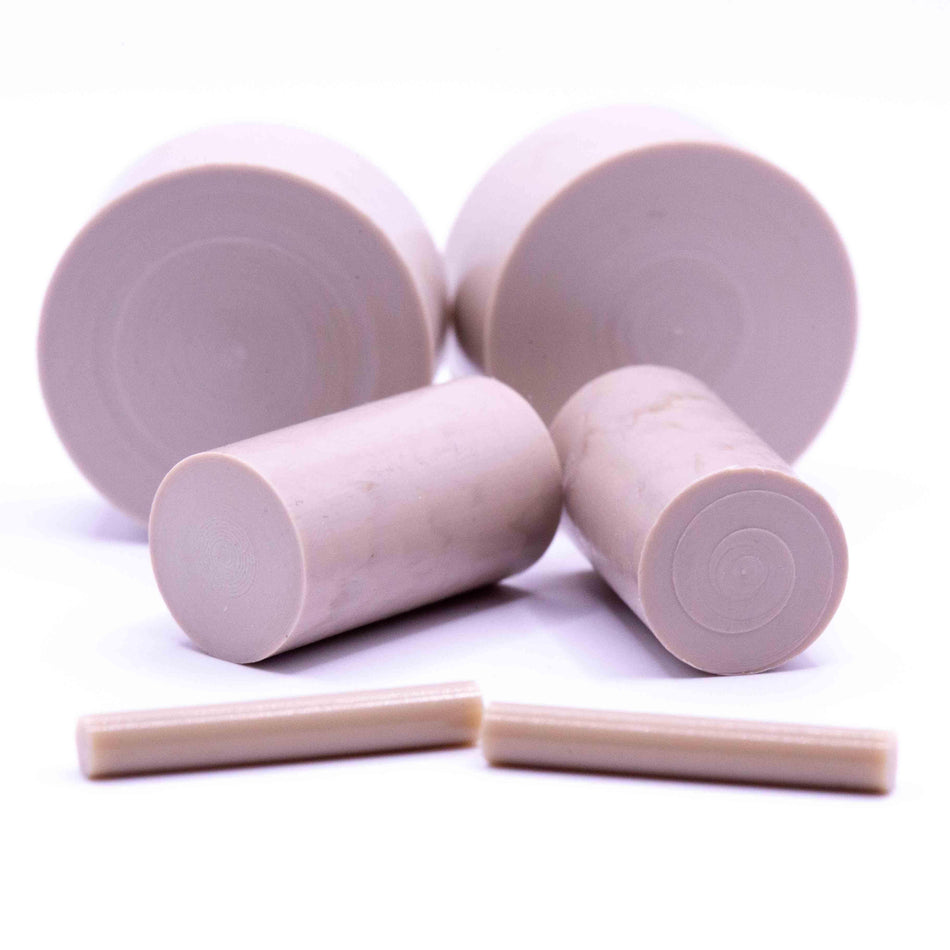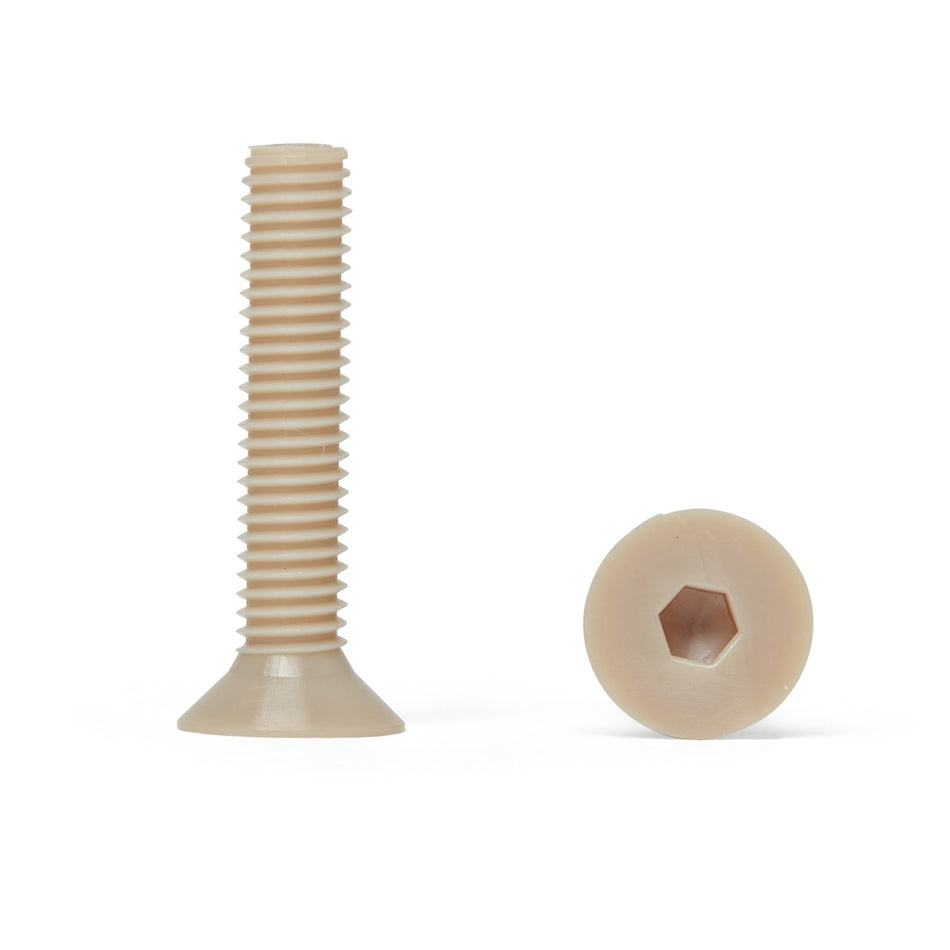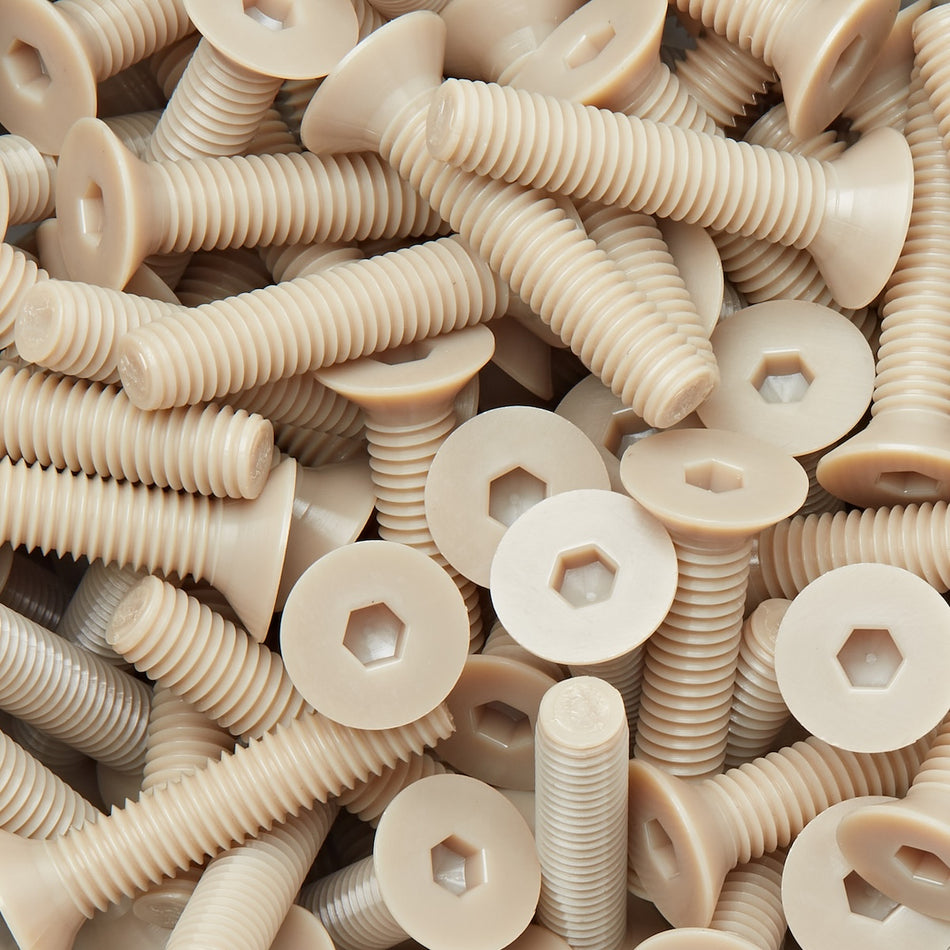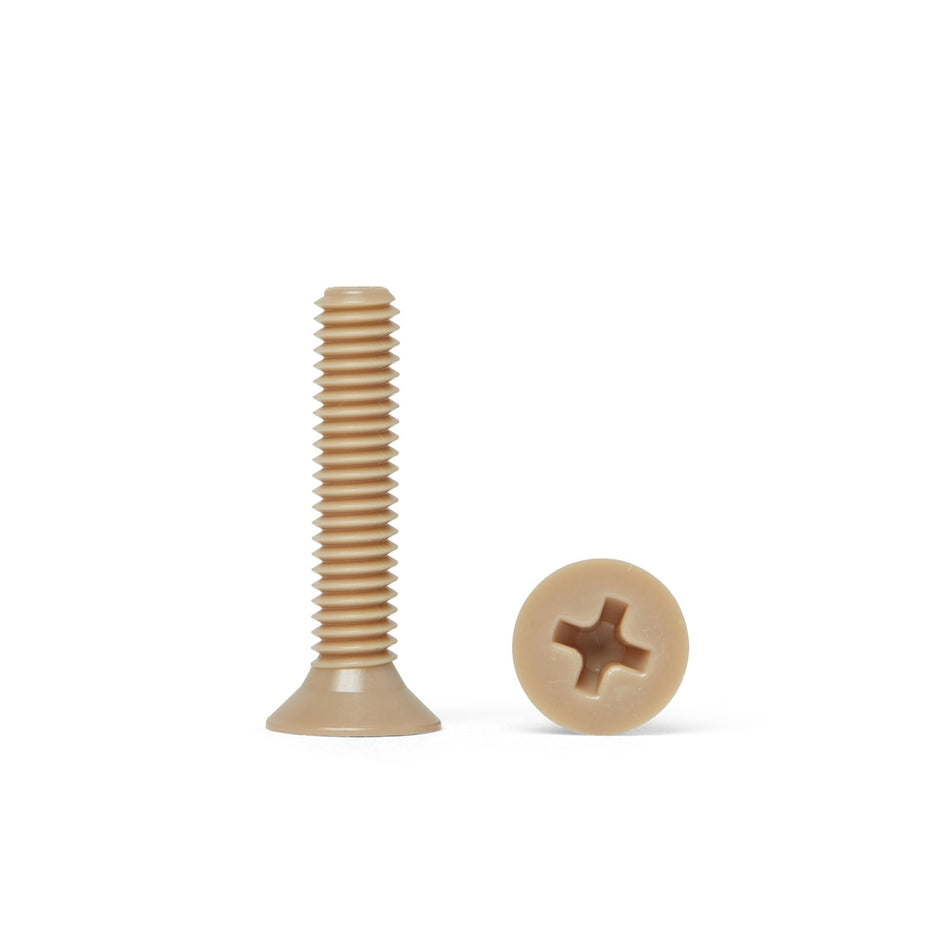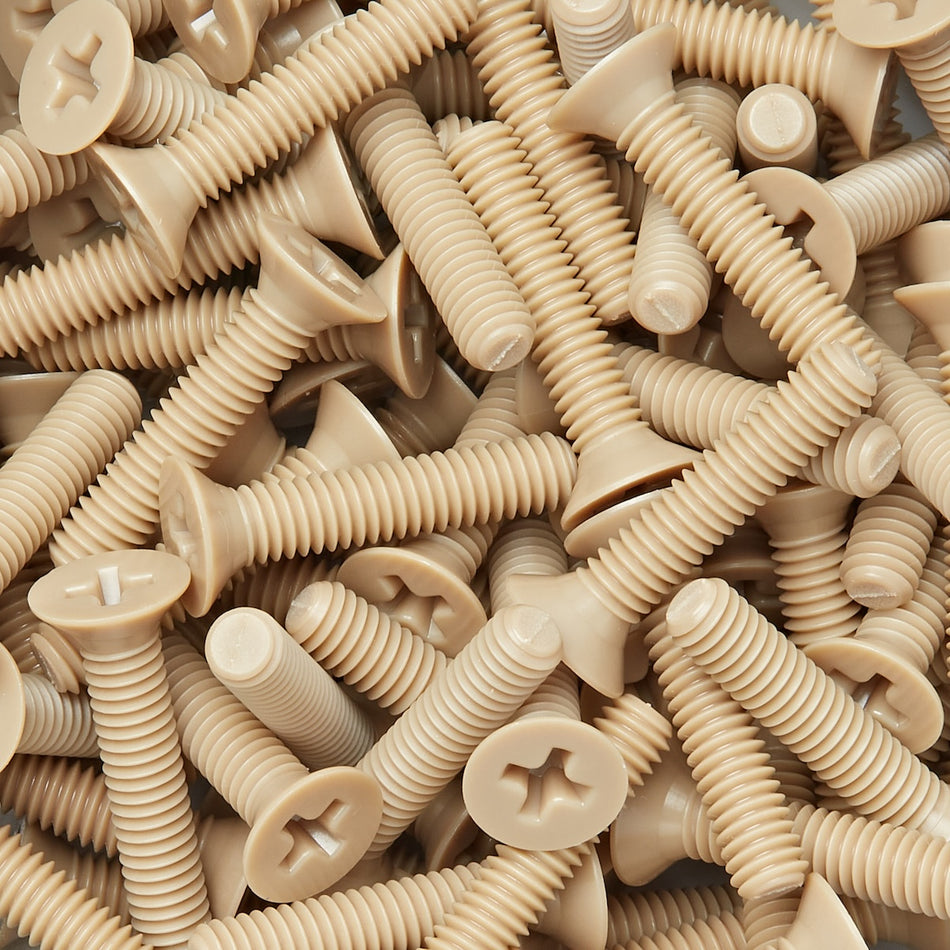72 Products
Biosciences Research Industry Polymer Fastener Screws, Nuts, Bolts, and Washers
The biosciences research industry may use polymer fastener screws, nuts, bolts, and washers in a variety of ways, depending on the specific needs and requirements of the research project. Some possible applications of these fasteners in biosciences research include:
-
Assembling and securing equipment and instruments: Polymer fasteners can be used to assemble and secure various pieces of equipment and instruments used in biosciences research, such as microscopes, centrifuges, and incubators. They may be preferred over metal fasteners due to their lightweight, corrosion-resistant, and non-conductive properties.
-
Attaching and mounting devices and sensors: Polymer fasteners can be used to attach and mount various devices and sensors used in biosciences research, such as sensors for monitoring temperature, humidity, and other environmental conditions. These fasteners may be preferred due to their insulation properties, which can help protect sensitive devices from electrical interference.
-
Fixing and securing samples and specimens: Polymer fasteners can be used to fix and secure samples and specimens for study, such as tissue samples or microbial cultures. They may be preferred due to their corrosion-resistant properties, which can help prevent contamination of the samples.
-
Securing and attaching labels and tags: Polymer fasteners can be used to secure and attach labels and tags to samples and specimens in order to identify and track them.
Overall, the use of polymer fastener screws, nuts, bolts, and washers in biosciences research can help improve the efficiency, accuracy, and reliability of research projects by providing durable and reliable fastening solutions.
Biosciences research is the study of living organisms and their relationships with each other and their environments. It encompasses a wide range of scientific fields, including biology, ecology, genetics, evolution, physiology, and biochemistry.
Biosciences research can be conducted at various levels, from the study of individual cells and molecules to the study of entire ecosystems. It may involve laboratory research, fieldwork, or a combination of both. Researchers in the biosciences may use a variety of techniques and tools, including microscopes, computers, and statistical analysis, to study living systems and understand how they function.
Some examples of areas of research in the biosciences include:
- Genetic research: studying the structure, function, and evolution of genes, as well as the ways in which they are regulated and expressed
- Evolutionary biology: studying the processes that have led to the diversity of life on Earth and how species change over time
- Ecology: studying the relationships between living organisms and their environments, including how they interact with one another and with non-living components of their environment
- Physiology: studying the functions of living organisms, including how they maintain homeostasis and respond to stimuli
- Biochemistry: studying the chemical processes that occur within living organisms, including the metabolism of nutrients and the synthesis of biomolecules such as proteins and enzymes
Biosciences research has many practical applications, including the development of new drugs and therapies, the improvement of agricultural practices, and the understanding of the impacts of environmental changes on living systems. It also has the potential to provide insights into fundamental questions about the nature of life and the evolution of species.

